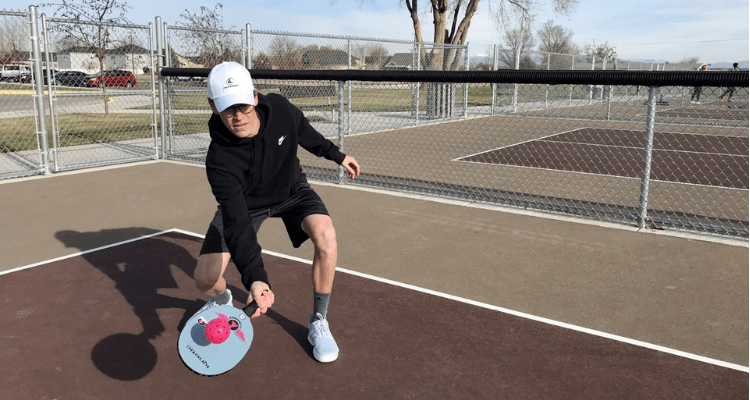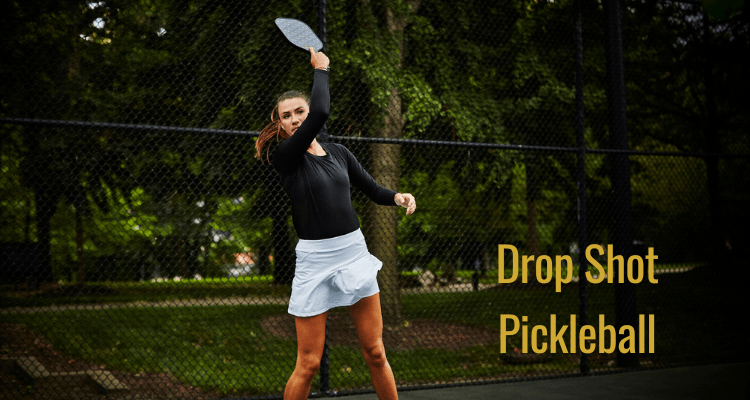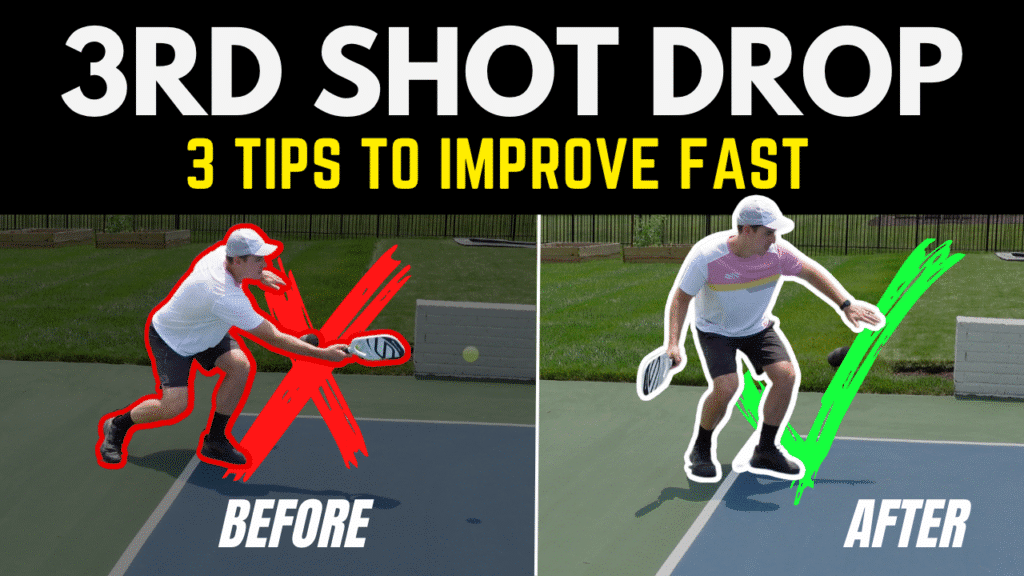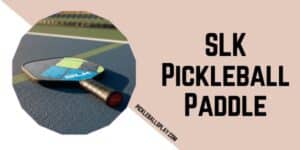In pickleball, not every winning shot comes from power. Some of the most effective plays are built on control, touch, and placement. The drop shot pickleball is the perfect example — a soft stroke that lands just inside the non-volley zone, forcing opponents out of position and breaking their rhythm.
At first glance it looks simple, but timing, paddle angle, and body control make all the difference between a drop that sets you up for success and one that floats too high and gets attacked. For players who want to move confidently to the kitchen line and control the pace of rallies, learning the drop shot is a game-changer.

Why the Drop Shot Pickleball Matters
The drop shot isn’t just another stroke; it’s a strategic weapon. Here’s why it matters so much:
- Neutralizes opponents at the net – A well-placed Drop Shot Pickleball forces them to hit upward instead of attacking.
- Creates time – It slows the rally down, giving you a chance to reset and reposition.
- Opens up angles – Once opponents are pulled forward, the court behind them becomes vulnerable.
- Essential for transitioning – If you’re stuck at the baseline, the Drop Shot Pickleball helps you advance to the kitchen line safely.
Technique: How to Hit a Perfect Drop Shot Pickleball
1. Grip
Use a continental grip (like shaking hands with the paddle). This allows flexibility for both forehand and backhand drops while keeping the paddle face slightly open.
2. Stance and Footwork
- Stay balanced with knees slightly bent.
- Move forward with small, controlled steps.
- Avoid lunging — smooth footwork helps you stay consistent.
3. Paddle Position
- Keep the paddle in front of your body.
- Contact the ball in front of your hips.
- Use a gentle, upward motion with minimal backswing.
4. Touch and Feel
- Focus on soft hands — you’re not driving the ball, you’re guiding it.
- Imagine “catching” the ball on the paddle face and letting it float over the net.
Common Mistakes to Avoid
Even experienced players struggle with drop shots. Here are the most common errors:
- Hitting too hard – The ball sails high, making it easy to attack.
- Standing flat-footed – Without forward movement, you lose control and consistency.
- Contacting too close to the body – Leads to awkward hits and loss of touch.
- Not adjusting for spin or pace – Failing to soften an opponent’s hard drive often causes errors.

Practice Drills to Master the Drop Shot Pickleball
- Wall Drill
Stand a few feet from a wall and practice soft drops, aiming for a consistent arc that would land in the kitchen. - Target Practice
Place cones or markers just inside the kitchen line. Try landing 10 consecutive balls inside the target zone. - Transition Drill
Start at the baseline, hit a Drop Shot Pickleball, then move a few steps forward. Repeat until you reach the kitchen line. - Partner Drill
Ask your partner to feed fastballs. Practice absorbing the pace and dropping the ball softly.
When to Use the Drop Shot in a Match
- From the baseline – Safest way to move toward the kitchen.
- Against aggressive players – Slows them down and forces defense.
- To reset a rally – Especially useful if you’re under pressure.
- As a surprise – Mix it in after drives and dinks to keep opponents guessing.
Drop Shot vs. Other Pickleball Shots
| Shot Type | Purpose | Risk Level | Best Situation |
|---|---|---|---|
| Drop Shot | Neutralize opponents, transition to net | Medium | From baseline or mid-court |
| Drive | Apply pressure with speed | High | When opponent is deep |
| Dink | Control pace at the kitchen | Low | At the non-volley zone |
| Lob | Push opponents back | High | When rivals crowd the net |
Advanced Tips for a Consistent Drop
- Vary trajectory – A higher arc gives you safety, while a flatter drop adds disguise.
- Read the ball early – Adjust paddle angle based on spin and height.
- Relax your grip – Loosen grip pressure to absorb pace more effectively.
- Practice with intent – Don’t just hit drop shots; simulate match conditions.

Mental Side of the Drop Shot
Confidence is as important as mechanics. Many players abandon the Drop Shot Pickleball after a few failed attempts, but persistence pays off. Once you trust your technique, you’ll stop fearing mistakes and start using it as a true weapon.
FAQs on Drop Shots in Pickleball
Is the drop shot the same as a dink?
No. A dink is usually played at the kitchen line, while a drop shot is hit from the baseline or mid-court to land softly in the kitchen.
How do I practice drop shots alone?
Use a wall or ball machine. Aim for consistent arcs that would land inside the non-volley zone.
Should beginners learn the drop shot early?
Yes. While it takes time to master, learning it early helps players build touch and strategy.
What’s more important — accuracy or height?
Accuracy matters most. A slightly higher drop that lands in the kitchen is better than a low one that clips the net.
Can I use a drop shot in singles pickleball?
Absolutely. In singles, it forces your opponent to run forward, often leaving the backcourt open.
Final Thoughts
The Drop Shot Pickleball may not be as dramatic as a powerful smash, but it’s one of the most valuable strokes in pickleball. Mastering it gives you control, balance, and the ability to dictate the rhythm of play. With the right grip, footwork, and plenty of practice, your drop shot can become the key to winning more points and elevating your overall game.




